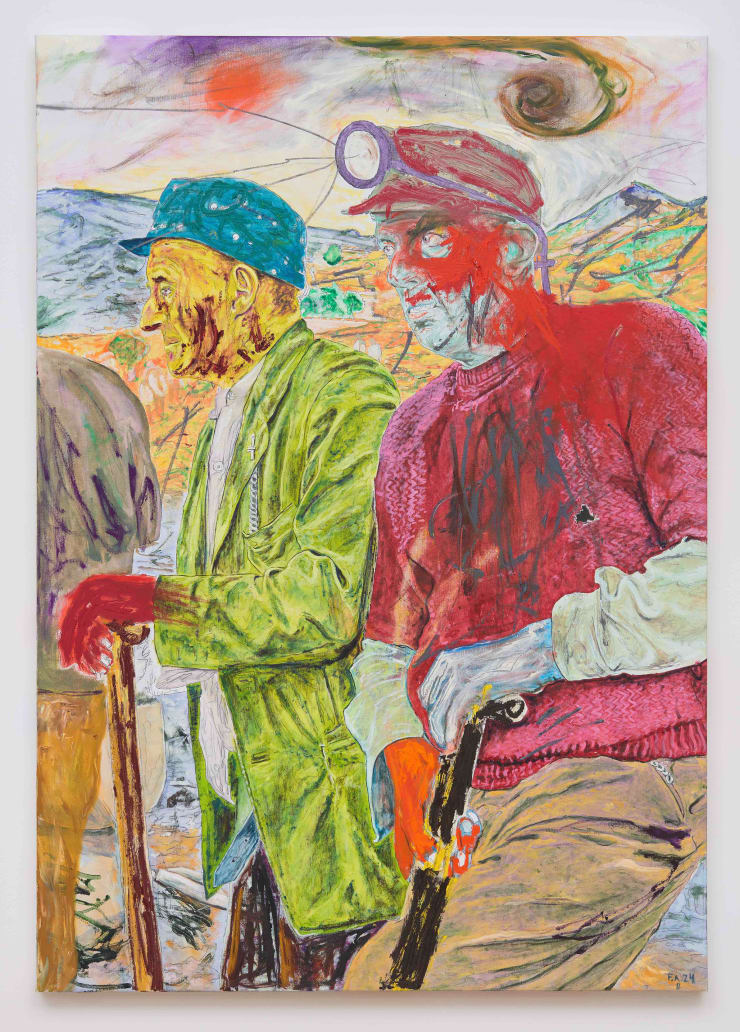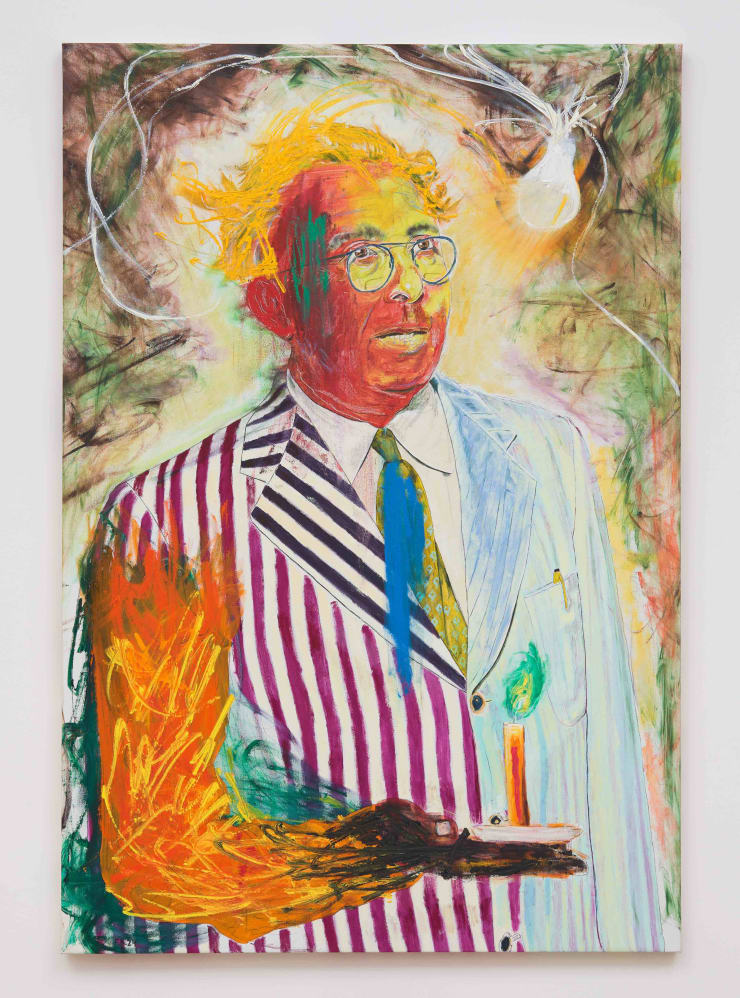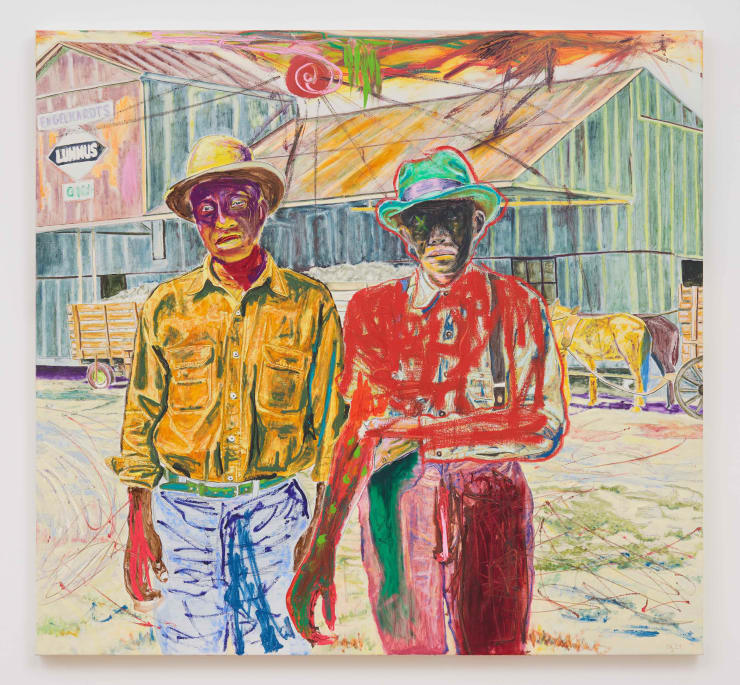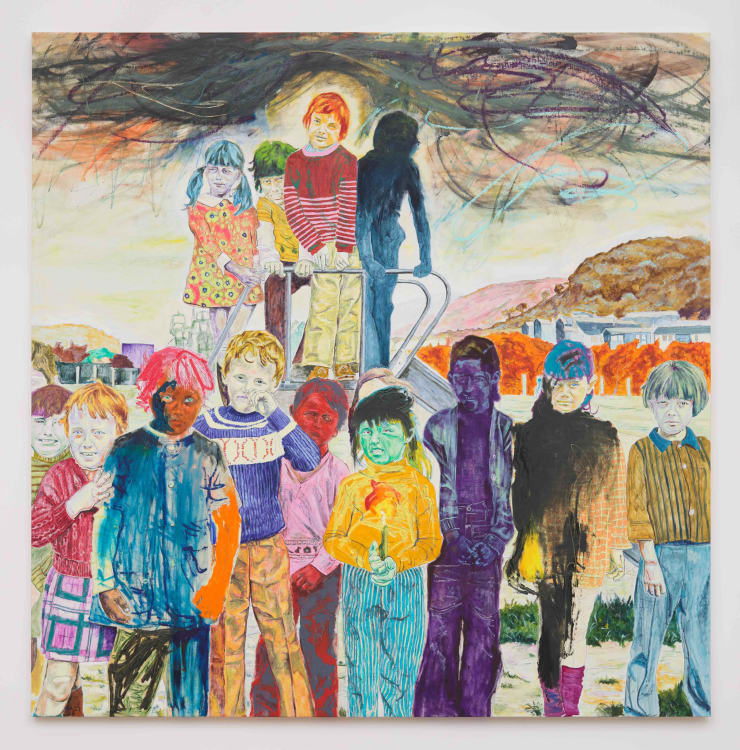Farley Aguilar: The Age of Effluence
Opening reception | Saturday 23 March, 11am-6pm
Artist's walkthrough | Saturday 23 March, 3-4pm
Edel Assanti is pleased to present The Age of Effluence, Farley Aguilar’s second solo exhibition at the gallery.
Farley Aguilar’s evocative and unsettling painted scenes question habitual modes of behaviour and the social facade of community. Working from found photographs of crowds, portraits and historical reportage, the Miami-based painter probes social constructs such as group identity, political allegiance and cultural ritual.
The Age of Effluence addresses the moral complexity at the heart of all narratives of human progress. In a targeted juxtaposition, the seven new paintings depict historically noteworthy scientists alongside vulnerable communities, the latter of whom bore the costs of extractive and ecologically unsustainable practices. Informed by Something New Under the Sun (2000), J. R. McNeill’s environmental history of the twentieth century, Aguilar’s latest series explores the dichotomy between human ingenuity and the limitations of nature, showing how creativity, when filtered through an ideology prioritising growth and profit above all else, can have perilous effects.
Double Portrait oh Thomas Midgley represents the duality of the American chemical engineer’s inventions. Midgley had a prolific career at General Motors in the first half of the 20th century and over the course of his career was granted more than 100 patents. Amongst these, however, were his two most notorious and disastrous inventions: leaded gasoline and some of the first chlorofluorocarbons (CFCs), both of which were eventually banned due to their adverse health and environmental impacts.
In Aguilar’s portrait of Fritz Haber, the German scientist stands in a laboratory holding a watch, a symbol of precision and control. Haber received the Nobel Prize in 1918 for his invention of the Haber–Bosch process, enabling the mass production of agricultural fertilisers, supporting food supply for nearly half of the world’s population. Haber, like Midgley, however, is a scientist defined by two faces: during World War I, Haber fronted the weaponisation of chlorine gas, an innovation for which he was dubbed the ‘father of chemical warfare’.
The uncanny dispositions of Aguilar’s renderings of Midgley and Haber reflect a contradiction between good and evil, innovation and destruction, or progress and ethical setback. Aguilar’s technical approach adds further layers of ambiguity, combining all manner of brushwork, oil stick and pencil to resurrect his contentious subjects in hallucinant colour. Expressive application meets tight, serrated outlines, springing the figures from their textured backgrounds. At times paint is applied directly from the tube, with markings violently scratched into the surface of canvas. Faces are obscured by ghoulish masks – crossed out eyes, distorted heads and sewn up mouths, summoning the darkest aspects of our raw nature.
Elsewhere, Aguilar utilises childhood as a motif to evoke a future in jeopardy for short-term gains. Effluent depicts three teenage survivors of the Minamata tragedy in Japan, caused by the release of methylmercury from a chemical factory, and The Bereft shows a group of children in the aftermath of the Aberfan mining disaster of 1966.
Intervening with the construction of history via the archive, Aguilar’s use of specific case studies demonstrates the pitfalls of allowing progress and profit to supersede ethical values. Conversely, the series of paintings in The Age of Effluence reveal the limitations of interpreting past events through the prism of moral binaries, from a perspective of contemporary hindsight. Aguilar’s figures beckon to us from across the void, their gestures rife with frustration, terror and hope.
About Farley Aguilar












